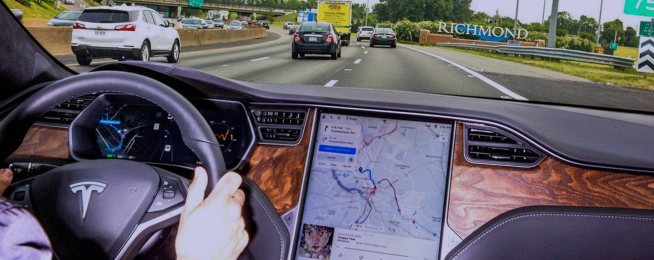A new study from Britain’s Transport Research Laboratory has confirmed the distractive power of touch screens, but has also shown that voice activated controls result in far less distraction.
Using a driver simulator equipped with both Android Auto and Apple CarPlay, the research subjects were assigned a number of in-car control tasks to undertake via the touch screen, and by voice.
It was a surprise just how much time drivers’ attention was diverted by the series of glances needed to operate the screen.
Among the worst outcomes were a mean of 20 seconds of cumulative glances using Android Auto to play a song on Spotify, and of 16 seconds to set up the route to a restaurant with CarPlay.
For voice commands those means fell to four and three seconds respectively.
The study found that controlling the vehicle’s position in the lane, keeping a consistent speed and headway to the vehicle in front, and reaction to a stimulus on the road ahead suffered significantly when using touch control.
Reaction time when using touch screens to select music on Spotify was worse than texting while driving.
Participants also underestimated the time they thought they spent looking away from the road when engaging with Android Auto and Apple CarPlay via touch control.
Participants were able to keep their eyes on the road more when using voice control than touch control, and were more likely to identify stimuli that required attention.
Despite this, most participants reported using touch rather than voice control in their real-world driving.
Previous research has indicated that Android Auto and Apple CarPlay are improvements on infotainment systems that had been brought to market by vehicle manufacturers.


